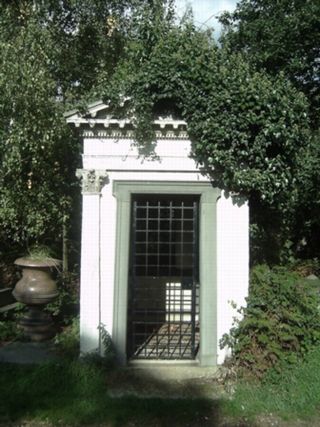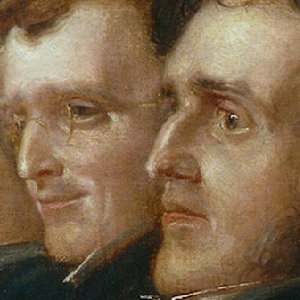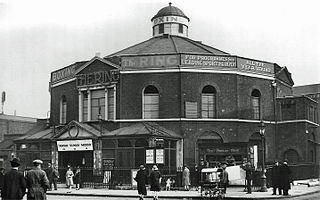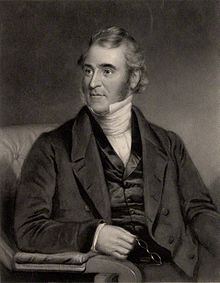
John Angell James, was an English Nonconformist clergyman and writer.

Abney Park cemetery is one of the "Magnificent Seven" cemeteries in London, England.

Ebenezer Henderson was a Scottish minister and missionary. He spent the early part of his life in Scandinavia, was an accomplished linguist and translator.

The London Missionary Society was an interdenominational evangelical missionary society formed in England in 1795 at the instigation of Welsh Congregationalist minister Edward Williams. It was largely Reformed in outlook, with Congregational missions in Oceania, Africa, and the Americas, although there were also Presbyterians, Methodists, Baptists, and various other Protestants involved. It now forms part of the Council for World Mission.

George Collison (1772–1847) was an English Congregationalist and educator associated with Hackney Academy or Hackney College, which became part of New College London—itself part of the University of London.

The Rev. James Sherman, was an English Congregationalist minister. He was an abolitionist, and a popular preacher at The Castle Street Chapel in Reading from 1821 to 1836. He and his second wife Martha Sherman made a success of Surrey Chapel, Blackfriars, London from 1836−54. Martha died in 1848.

The Rev. Samuel Oughton, Baptist missionary to Jamaica 1836–1866, and colleague of William Knibb, was an abolitionist who became an outspoken advocate of black labour rights in Jamaica during the gradual abolition of slavery in the late 1830s and thereafter. He was briefly imprisoned in Jamaica during 1840. Originally associated with James Sherman's Independent Congregational Surrey Chapel, Southwark, and from time to time invited back by Sherman, he was closely associated with the Baptists in Jamaica, who were largely organised along Congregational lines and among the predominantly African-Caribbean population, following their founding by George Lisle, a former slave from America.

Joanna Vassa was the only surviving child of the former slave and anti-slavery campaigner Olaudah Equiano. Her grave in Abney Park Cemetery, London, was given listed status in 2008 but little is known of her life.

John Pye-Smith was a Congregational minister, theologian and tutor, associated with reconciling geological sciences with the Bible, repealing the Corn Laws and abolishing slavery. He was the author of many learned works.
George Liele was an African American and emancipated slave who became the founding pastor of First Bryan Baptist Church and First African Baptist Church, in Savannah, Georgia (USA). He later would become a missionary to Jamaica.

Alexander Fletcher (1787–1860), the Children's Friend, was a Scottish kirk minister, and later an Independent (Congregational) divine in England. Author of numerous devotional works, and founder of the Finsbury Chapel in London, he was widely acknowledged as the pioneer of preaching to audiences of children and attracting large crowds of young people to nonconformist chapels through specially designed events and services as well as through Sunday schools.

Aaron Buzacott the elder was a British missionary, Congregationalist colleague of John Williams, author of ethnographic works and co-translator of the Bible into Cook Islands Māori. Buzacott was a central figure in the South Seas missionary work of the London Missionary Society, and lived on Rarotonga from 1828 to 1857. During his time there, he assisted in the development of the written form of Cook Islands Māori, compiling a primer on English and Cook Islands Maori grammar. Buzacott, along with Williams and other missionary colleagues, contributed to the first translation of the Bible into that language, and translated additional theological texts including lectures from his education in London.

Josiah Conder, was an abolitionist, author and hymn-writer. A correspondent of Robert Southey and well-connected to Romantic authors of his day, he was editor of the British literary magazine The Eclectic Review, the Nonconformist and abolitionist newspaper The Patriot, the author of romantic verses, poetry, and many popular hymns that survive to this day. His most ambitious non-fiction work was the thirty-volume worldwide geographical tome The Modern Traveller; and his best-selling compilation book The Congregational Hymn Book. Conder was a prominent London Congregationalist, an abolitionist, and took an active part in seeking to repeal British anti-Jewish laws.

The Rev. Joseph Ketley (1802-1875) was a mid-nineteenth century Congregational missionary and abolitionist in Guyana, the former British colony of British Guiana which was known as Demerara and Essequibo at the time when his mission was established. The Dutch colonies of Berbice‚ Demerara and Essequibo were ceded to the British in 1814‚ and incorporated into a single colony in 1831. Guyana became independent in 1966.

John Harris, English Congregational minister, Christian essayist and author, became the first Principal of New College, St John’s Wood, London.

The Surrey Chapel (1783–1881) was an independent Methodist and Congregational church established in Blackfriars Road, Southwark, London on 8 June 1783 by the Rev. Rowland Hill. His work was continued in 1833 by the Congregational pastor Rev. James Sherman, and in 1854 by Rev. Newman Hall. The chapel's design attracted great interest, being circular in plan with a domed roof. When built it was set in open fields, but within a few years it became a new industrial area with a vast population characterised by great poverty amidst pockets of wealth. Recently the site itself has been redeveloped as an office block, and Southwark Underground Station has been built opposite.

Robert Halley was an English Congregational minister and abolitionist. He was noted for his association with the politics of Repeal of the Corn Laws, and became Classical Tutor at Highbury College and Principal of New College, St John's Wood, London.
Thomas Wilson was a Congregational benefactor of chapels and educational institutions and founder member of the Council of University College London from 1825.

John Nelson Goulty was an English Nonconformist Christian pastor. He is best known for his sermons against mandatory tithing to the Church of England and against colonial slavery. After early work at Nonconformist chapels in Godalming and Henley-on-Thames, he moved to Brighton where he became "one of the most important persons" in the 300-year history of the town's Union Chapel. He also helped to found schools and a cemetery in Brighton.

Thomas William Davids (1816–1884) was a Welsh nonconformist minister and ecclesiastical historian.


















